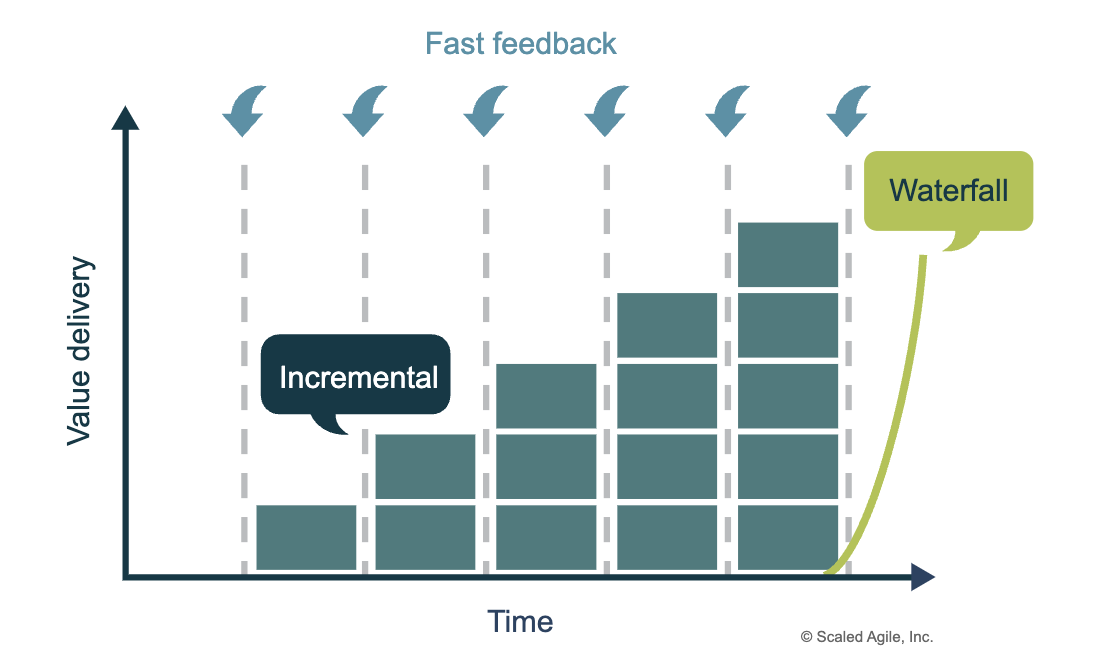
Deliver Value Incrementally – In the fast-paced world of software development and project management, delivering value incrementally has become a cornerstone of successful project execution. This approach, rooted in Agile methodologies, ensures that stakeholders receive tangible benefits throughout a project’s lifecycle, rather than waiting for a big-bang delivery at the end. In this article, we explore the concept of delivering value incrementally, its advantages, and how it aligns with Agile principles.
What Does It Mean to Deliver Value Incrementally?
At its core, delivering value incrementally means providing parts of a product or project in smaller, usable segments rather than delivering everything at once upon project completion. This approach breaks down the work into smaller, manageable pieces, often referred to as iterations or increments. Each increment should ideally add value, improve functionality, or meet specific requirements.

Advantages of Delivering Value Incrementally:
- Early Feedback: Incremental delivery allows stakeholders to see and use parts of the product earlier in the development process. This results in quicker feedback, which is invaluable for making necessary adjustments and improvements.
- Risk Mitigation: By breaking the project into smaller increments, it’s easier to manage risks. If an issue arises, it can be addressed early in the project, reducing the likelihood of costly and time-consuming rework.
- Higher Customer Satisfaction: With incremental delivery, customers see results sooner and can start benefiting from the product’s features earlier. This leads to increased customer satisfaction and engagement.
- Flexibility: Incremental delivery allows for flexibility in adapting to changing requirements or market conditions. Developers can incorporate changes more easily during shorter development cycles.
- Transparency: Stakeholders have transparency into the project’s progress with each increment. This transparency builds trust and keeps everyone informed throughout the project.
- Faster Time-to-Market: By delivering valuable features sooner, products can get to market faster. This is crucial in competitive industries where time-to-market is a significant factor.
How Does Incremental Delivery Align with Agile Principles?
Incremental delivery is closely aligned with Agile principles and methodologies, including Scrum and Kanban. Here’s how:
- Iterative Development: Agile practices involve breaking work into iterations or sprints. Each iteration produces a potentially shippable product increment, aligning with the incremental delivery approach.
- Customer Collaboration: Agile principles emphasize close collaboration with customers and stakeholders throughout the development process. Incremental delivery fosters this collaboration by allowing customers to see progress early and provide feedback.
- Responding to Change: Agile embraces changing requirements, even late in development. Incremental delivery accommodates these changes more effectively because it’s easier to modify smaller increments.
Practical Implementation:
To deliver value incrementally effectively, consider the following steps:
- Identify Incremental Goals: Define what constitutes value for each increment. Ensure each goal aligns with project objectives.
- Prioritize Features: Determine which features will be included in each increment based on customer needs, project constraints, and dependencies.
- Iterate and Deliver: Plan and execute iterations or increments, delivering functionality, features, or improvements regularly.
- Gather Feedback: Encourage stakeholders to provide feedback after each increment and use this feedback to make improvements.
- Adapt and Reiterate: Be prepared to adapt based on feedback and changing requirements. Continuously reiterate the process.
In Conclusion:
Delivering value incrementally is a fundamental Agile principle that leads to more successful project outcomes. By providing stakeholders with smaller, meaningful portions of a product or project throughout its development, you create opportunities for feedback, risk mitigation, and increased customer satisfaction. This approach is not only Agile-compliant but also a pragmatic way to manage complex projects in today’s dynamic business environment.

Be the first to comment